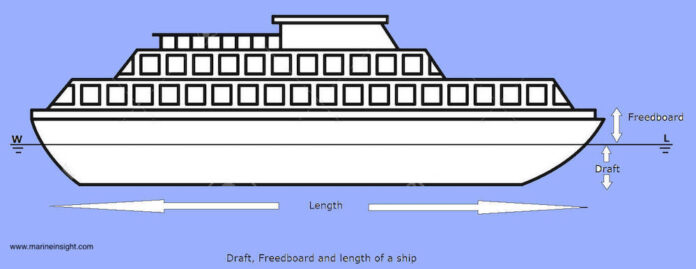When it comes to boating, understanding the concept of boat draft is crucial for safe and efficient navigation.
Boat draft refers to the vertical distance between the waterline and the deepest point of a boat’s hull. It plays a significant role in determining a vessel’s maneuverability, stability, and overall handling characteristics on the water.
In this blog, we’ll explore the fundamentals of boat draft and how it influences a boat’s performance, helping you navigate the waters with confidence.
Understanding Boat Draft
Before we delve into how boat draft affects handling, let’s first understand what it is and how it’s measured. Boat draft is typically measured in feet or meters and represents the depth of water needed to float the boat properly.
It’s determined by factors such as the design of the hull, the weight and distribution of the boat’s load, and the presence of keels or other protrusions beneath the waterline.
A boat’s draft can vary significantly depending on its size, type, and purpose. Small recreational boats may have a shallow draft, allowing them to navigate in shallow waters and access secluded coves and beaches.
In contrast, larger vessels such as cruise ships or cargo ships often have a deeper draft to accommodate their size and cargo capacity.
Now, let’s explore how boat draft affects handling and navigation:
Maneuverability
The draft of a boat has a direct impact on its maneuverability in the water. Generally, boats with a shallow draft are more maneuverable than those with a deeper draft. This is because they can navigate in shallower waters and make tighter turns without running aground.
On the other hand, boats with a deeper draft require deeper water to operate effectively and may have limitations when maneuvering in tight spaces or shallow areas.
Stability
The draft of a boat also affects its stability in the water. In general, boats with a deeper draft tend to be more stable than those with a shallow draft. This is because the deeper hull provides more resistance to rolling and pitching motions, resulting in a smoother ride in rough seas.
However, boats with a shallow draft may be more susceptible to rolling and tipping in choppy conditions, especially if they have a narrow beam or flat bottom.
Speed and Efficiency
Boat draft can impact a vessel’s speed and fuel efficiency. In general, boats with shallow drafts experience less resistance as they move through the water, allowing them to achieve higher speeds with less power.
Conversely, boats with a deeper draft may require more power to overcome the increased resistance, resulting in lower speeds and higher fuel consumption.
Additionally, boats with a deeper draft may be limited in their ability to navigate certain waterways or access shallow harbors and anchorages.
Navigating in Different Conditions
The draft of a boat must be considered when navigating in different water conditions. In shallow or restricted areas, boats with a shallow draft are preferred to avoid running aground or damaging the hull.
However, in deeper waters or offshore environments, boats with a deeper draft may be necessary to provide stability and seakeeping capabilities in rough seas.
Final Words
Boat draft is a fundamental concept that every boater should understand to navigate safely and effectively on the water.
Whether you’re piloting a small recreational boat or a large commercial vessel, the draft of your boat plays a significant role in its handling, stability, speed, and efficiency.
By considering the draft of your boat and the characteristics of the waterway you’re navigating, you can make informed decisions to ensure a smooth and enjoyable boating experience. So, next time you’re out on the water, take a moment to consider how the boat draft affects your vessel’s performance, and navigate with confidence, knowing that you’re in control.
Happy boating!
